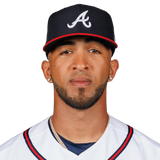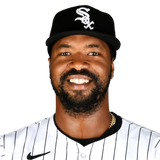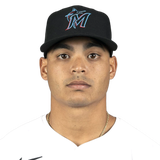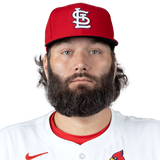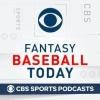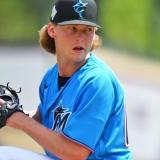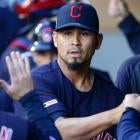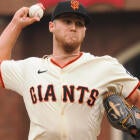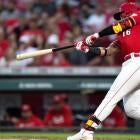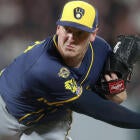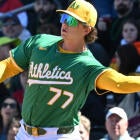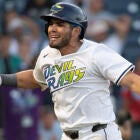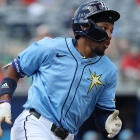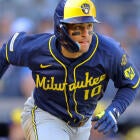Circumstances have changed since our first round of draft prep. We're working with a much shorter schedule now, which of course changes the way certain players are valued. It was always the year of the pitcher, with the most skilled at that position enjoying a bump in value at a time when offense dominates the game. But now, even those with workload limitations are able to join in.
Consider this your reintroduction to the 2020 draft pool, accounting for all the changes that have taken place since and because of the coronavirus lockdown. Over the span of 20 articles, Scott White and Chris Towers look at the top 200 in Scott's Rotisserie rankings, highlighting the reasons for and against drafting each. It makes for a well-rounded education on every player, revealing critical details that more argument-based evaluations might conveniently leave out.
So if you want a crash course on this year's player pool, particularly in light of more recent events, you've come to the right place. We're going through Nos. 101 through 110 here. And you can find the rest right here: 1-10 | 11-20 | 21-30 | 31-40 | 41-50 | 51-60 | 61-70 | 71-80 | 81-90 | 91-100 | 101-110 | 111-120 | 121-130 | 131-140 | 141-150 | 151-160 | 161-170 | 171-180 | 181-190 | 191-200
No. 101-110
| ||||||||||||
The Case For: After making a concerted effort to join the launch angle revolution in 2018, Kepler finally got the desired results in 2019, delivering far and away the best numbers of his still young career. While the base stats make it look like a sudden leap, the underlying ones show a gradual skills progression, which should inspire confidence. His strikeout rate is more like that of a batting average specialist, which perhaps hints of even more upside, and as a possible leadoff man for a deep Twins lineup, his runs and RBI won't be lacking.
The Case Against: He may not strike out much, but for him, improving the launch angle meant eliminating line drives. His low BABIPs aren't bad luck, then, but the natural result of putting everything in the air, which means he'll need to sustain the power gains to remain a mixed-league asset. Only time will tell. -Scott White
| ||||||||||||
The Case For: We have a tendency to overcomplicate things sometimes, but the case for Rosario is quite straightforward: He hits between .276 and .290 every year and should perform at a 30-homer pace while batting in a great lineup. Don't overthink it, just be glad the value is there.
The Case Against: In an era when seemingly everyone performs at a 30-homer pace, does Rosario really stand out? Especially if he hits closer to .270 than .290 like he did last year. He won't cost you much, but at Rosario's ADP, you're passing on higher upside players like Josh Donaldson or Carlos Correa. Is that worth it? -Chris Towers
| ||||||||||||
The Case For: If not for Vladimir Guerrero, Jimenez would have been the most hyped prospect in years coming into 2019. That he didn't manage to live up to the hype despite hitting 31 homers in just 122 games tells you exactly how high expectations for Jimenez were and are. We saw a glimpse of the potential upside in the second half of the season, when he hit .292/.328/.542 with a 38-homer pace. Jimenez could be a legitimate four-category contributor as soon as 2020.
The Case Against: The plate discipline is scary. Even in that great second half, he struck out 62 and walked just 11 times, so the bat really has to play up. That profile isn't a death knell, but there aren't many elite hitters in 2020 who walk that infrequently and strike out that much — Javier Baez is probably the closest example, and Jimenez doesn't have the steals potential Baez does. Jimenez needs to improve to be worth his Draft Day cost, and there's no guarantee he will. -Chris Towers
| ||||||||||||
The Case For: Let's start with this: The White Sox know Robert better than anyone, and they gave the 22-year-old a $50 million contract with fewer than 50 games at Triple-A under his belt. Robert will be on the Opening Day roster, barring injury, and brings legitimate 30-homer, 30-steal potential to the table, along with a career .312 average in the minors. This a potential Fantasy superstar's profile.
The Case Against: Haven't we learned from Vladimir Guerrero and Eloy Jimenez? Sometimes it takes time for even top prospects to adjust to the majors, and Robert comes to the majors with a long track record of injuries and a subpar approach at the plate — 23.4% strikeout rate, 5.1% walk rate between three levels in 2019. The power-speed potential is obviously enticing, but Robert is by no means a can't-miss prospect. -Chris Towers
| ||||||||||
The Case For: Carrasco has been one of the steadiest starting pitchers in Fantasy since his breakthrough in 2014, consistently delivering big strikeout totals with an ERA between 3.25 and 3.50 and a WHIP south of 1.15. Last year was obviously an exception when he was diagnosed with leukemia at the end of May. He returned to pitch out of the bullpen in September, not having enough time to build up as a starter, and showed about the same velocity as before the leukemia diagnosis. Given his track record, the discount may be unwarranted.
The Case Against: There's simply no way of knowing the sort of toll that Carrasco's leukemia battle took on him physically. Even if you want to point to his September velocity as a positive sign, endurance is arguably the bigger concern. His going rate, while discounted from the typical Carrasco season, still requires him to be more than Ross Stripling, but if he's struggling to make it that third time through a lineup, he might be reduced to a similar role. The odds are already against a hard-thrower maintaining his stuff deep into his 30s, and Carrasco will be 33 by opening day. -Scott White
| ||||||||||
The Case For: Paxton's first year in Yankee Stadium didn't go as planned, but there's still a lot to like about him, especially now that his price has gone down. He's an elite strikeout pitcher with the stuff to back it up, but his control regressed in 2019 while his vulnerability to the long ball solidified. However, if the walk rate goes back down to pre-2019 levels, there's still the potential for a low 3.00s ERA with tons of strikeouts. Paxton could give you Patrick Corbin production at a significant discount.
The Case Against: There is, of course, a reason Paxton is available for a discount. Well, two. For one, he just hasn't been that good the last two seasons, and while you could have written it off as bad luck in 2018, his peripherals indicate he deserved every bit of his high-3.00s ERA last season. More worryingly for Fantasy players, however, is the significant injury history, including the surgery to remove a cyst in his back that Paxton underwent the week before pitchers and catchers reported in February. Durability is less of a concern in a shortened season, of course, but any time he does miss will be even more crippling. -Chris Towers
| ||||||||||
The Case For: What he did in 15 major-league starts wasn't enough for you, even with the numbers being split almost evenly between the Marlins and Diamondbacks? Well, what if I told you Gallen also had a 1.77 ERA, 0.71 WHIP and 11.0 K/9 in 14 starts for Triple-A New Orleans of the PCL, a league where the average ERA was 5.48? What he did in the majors he did with 4.1 BB/9 compared to 1.7 during that stint at New Orleans. Control was supposed to be his greatest asset, so it should come with more experience. Imagine then how good Gallen will be.
The Case Against: Well, what if it doesn't come? Luis Castillo threw a ton of strikes in the minors but still hasn't quite landed that plane in the majors. Is Gallen still going to be a standout without it? And did he have good home run luck in 2019? His 4.15 xFIP doesn't exactly jibe with his 2.81 ERA. Are we getting ahead of ourselves by drafting him ahead of more established options like Kyle Hendricks and David Price? It's dangerous, after all, to assume pitcher development in today's innings-counting, home run-ambushing environment. -Scott White
| ||||||||||
The Case For: If you remember back to this time last year, Luzardo was one of the most hyped pitching prospects expected to make an impact in 2019. He dominated the minors, he dominated in spring ball, and he seemed to have forced his way into the rotation before a shoulder injury derailed his season. He ultimately pitched just 55 innings between the majors and minors but showed just how dominant he can be despite the injury, striking out 73 batters while allowing just 14 runs in those 55 innings.
The Case Against: He's a young pitcher coming off a shoulder injury who has never thrown more than 109.1 innings in a season. There's upside, yes, but you're not just drafting this guy as a flier — at his cost, you're relying on him as a key part of your rotation. Even if the shortened season removes the threat of an innings limit, you shouldn't expect him to throw six-plus innings with much consistency. -Chris Towers
| ||||||||||
The Case For: Whatever you thought of Lynn going into last year is certainly changed now. After looking like he might play out the rest of his career as a back-end starter, unable to recapture his pre-Tommy John form after losing all of 2016 to the procedure, he suddenly evolved into a bat-missing force the likes of which we had never seen. Ranking seventh in both strikeouts and innings pitched, he showed the makings of an ace, especially when you consider he had a 3.24 ERA, 1.17 WHIP and 11.1 K/9 over his final 28 starts, going seven-plus innings in 15 of them.
The Case Against: As the Ryan Reynolds GIF would say, "but why?" The answers are hazy. It might be as simple as him ditching his less effective pitches for more four-seamers and cutters, but can he continue to fool hitters if he's not really changing speeds, basically just throwing three kinds of fastball (a sinker included)? For a 32-year-old with a long and middling track record, it defies believability. -Scott White
| ||||||||||||
The Case For: The case for Santana is always easier to make in a points league, where his high walk and low strikeout rates routinely position him among the highest scorers at the position. But some changes to his batted-ball profile last year – specifically, putting the ball in the air less — led to career-best numbers that actually made him an asset in batting average for the first time, closing the gap between the two formats. He ended up placing seventh among first basemen in traditional 5x5 leagues, ahead of more highly regarded choices like Max Muncy, Paul Goldschmidt and Anthony Rizzo.
The Case Against: Hitting fewer fly balls, while possibly helpful for batting average, generally isn't the way to go in the juiced ball era, and the changes weren't dramatic enough to entirely explain the difference anyway. Santana appeared closer to his usual self in the second half (hitting .262 compared to .297 in the first half), and heading into his age-34 season, he's also at risk of natural decline. Don't chase the result here. -Scott White
![[object Object] Logo](https://sportshub.cbsistatic.com/i/2020/04/22/e9ceb731-8b3f-4c60-98fe-090ab66a2997/screen-shot-2020-04-22-at-11-04-56-am.png)




